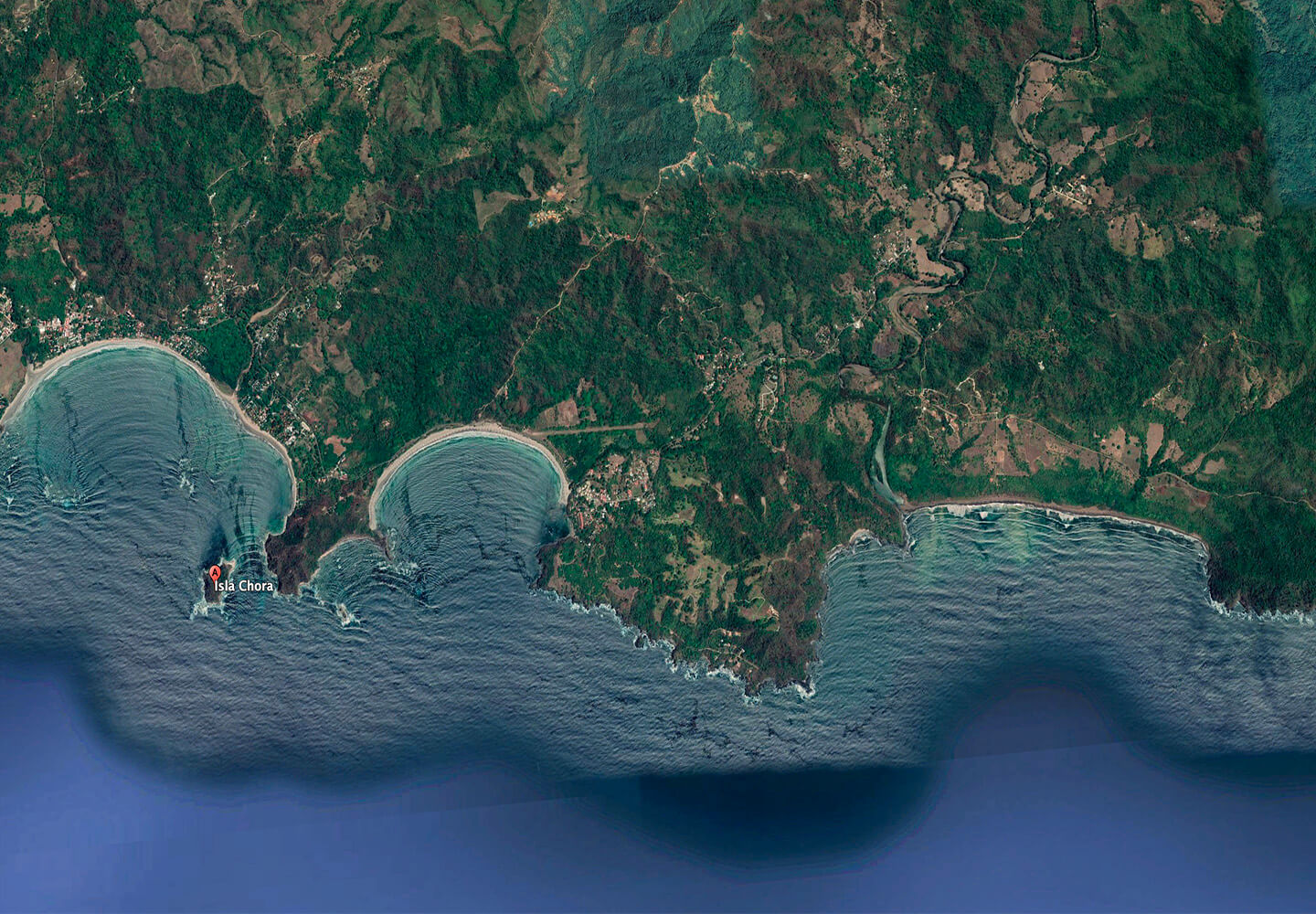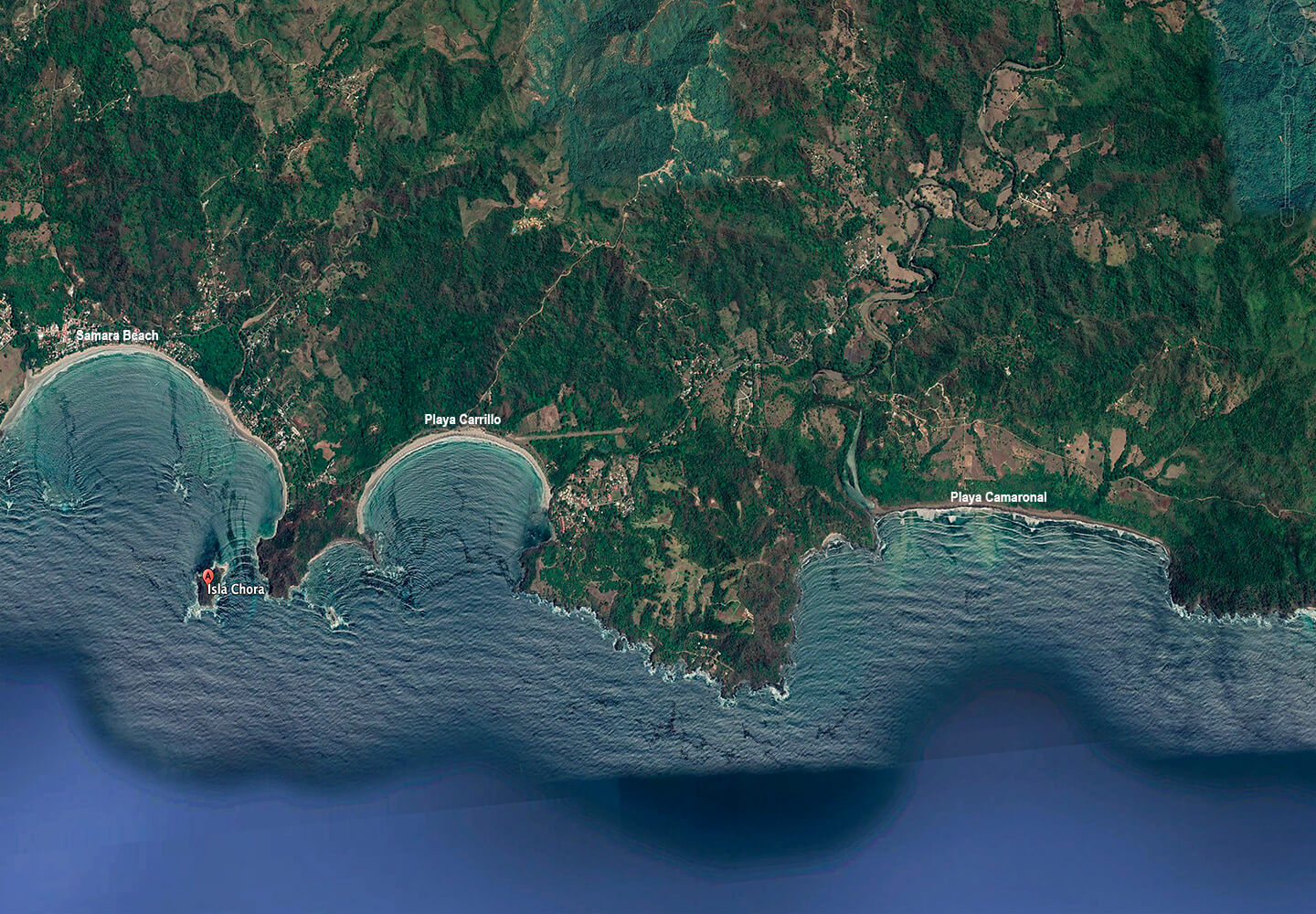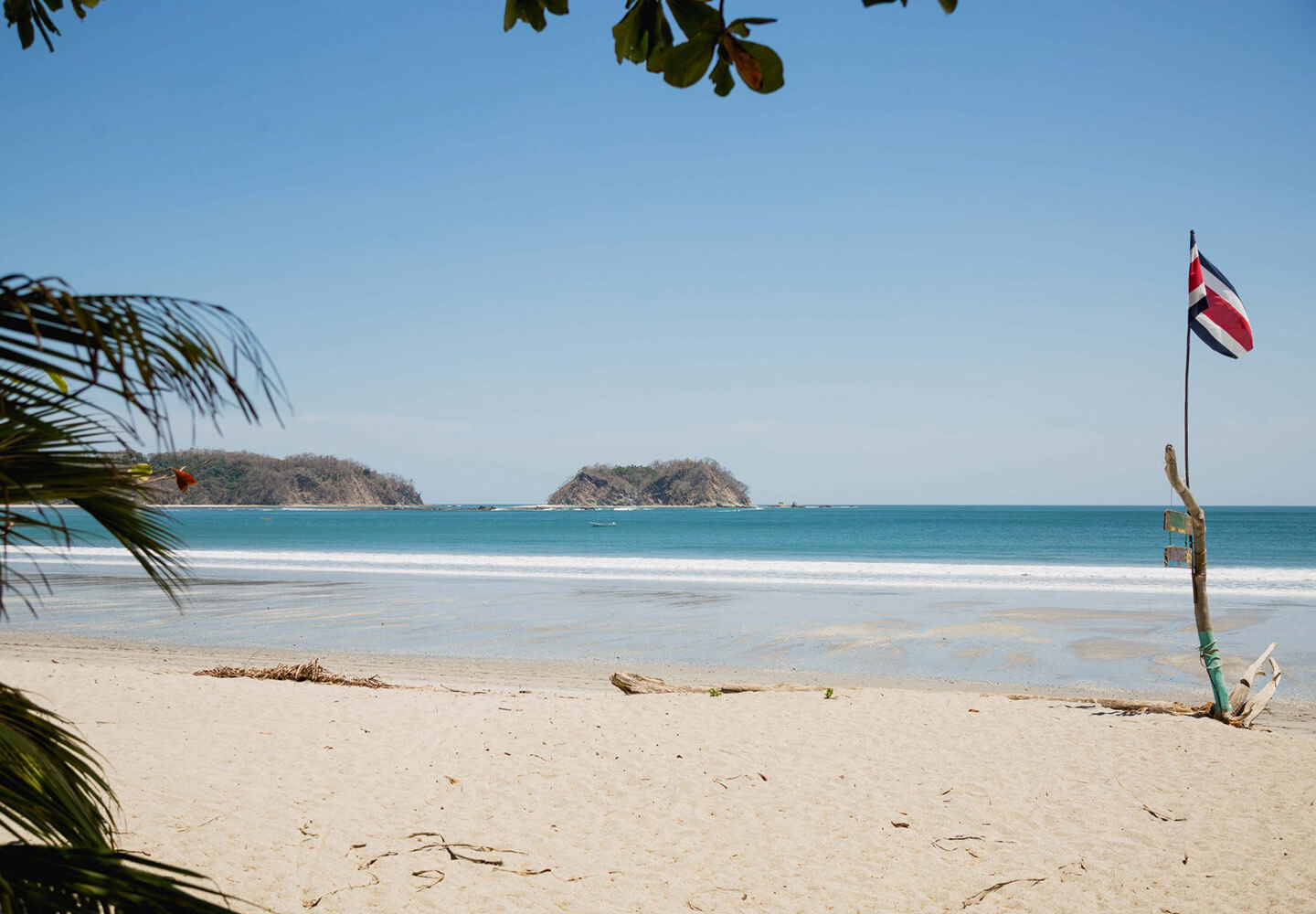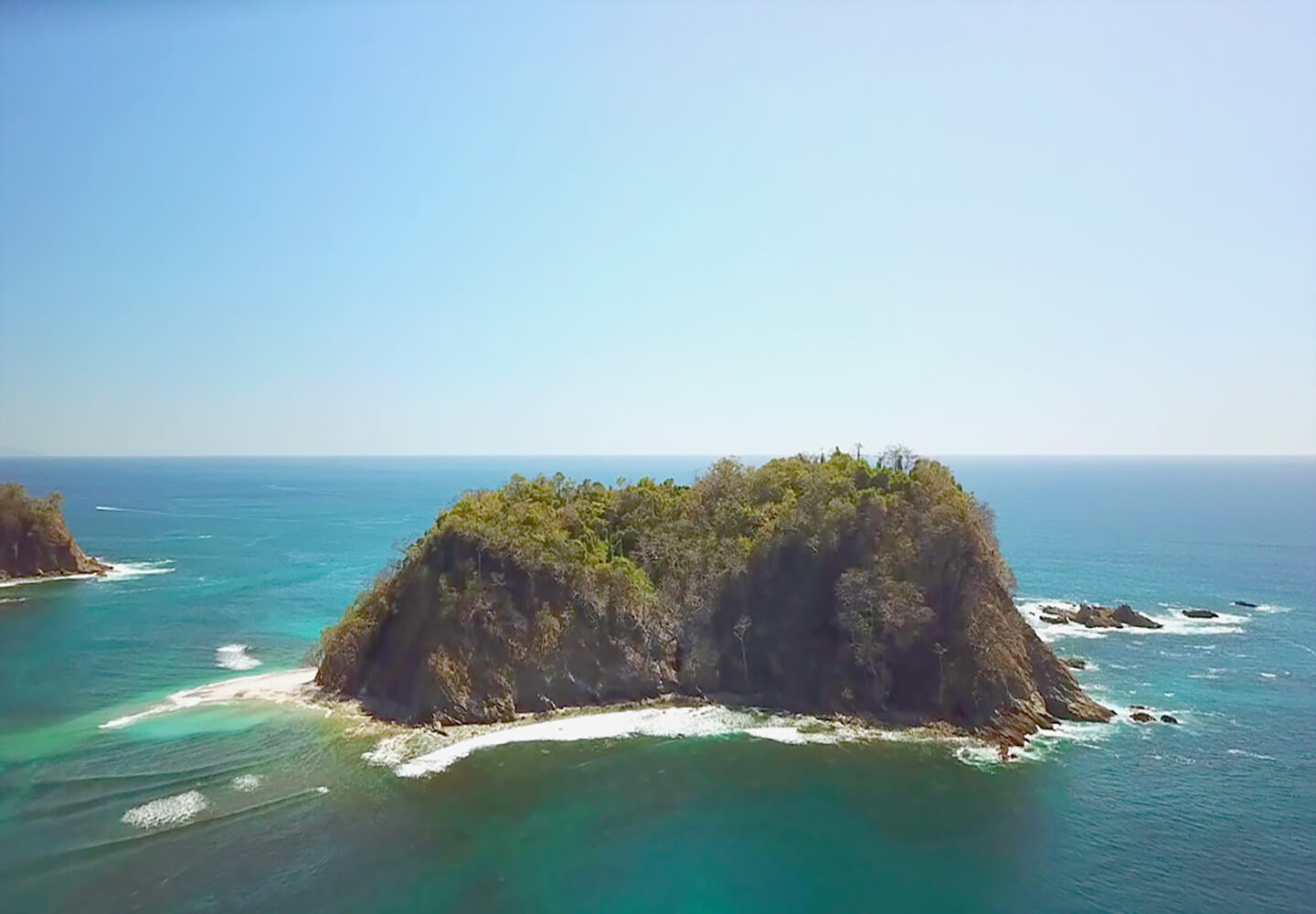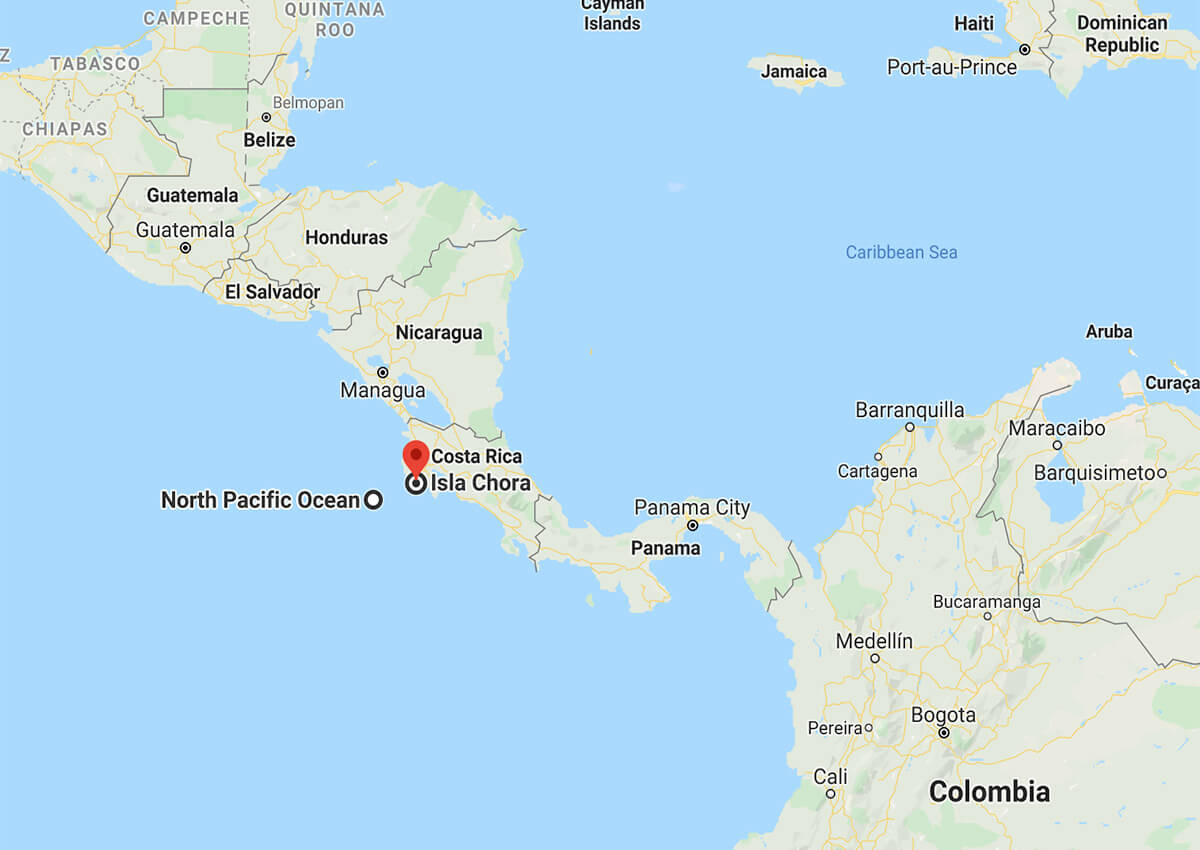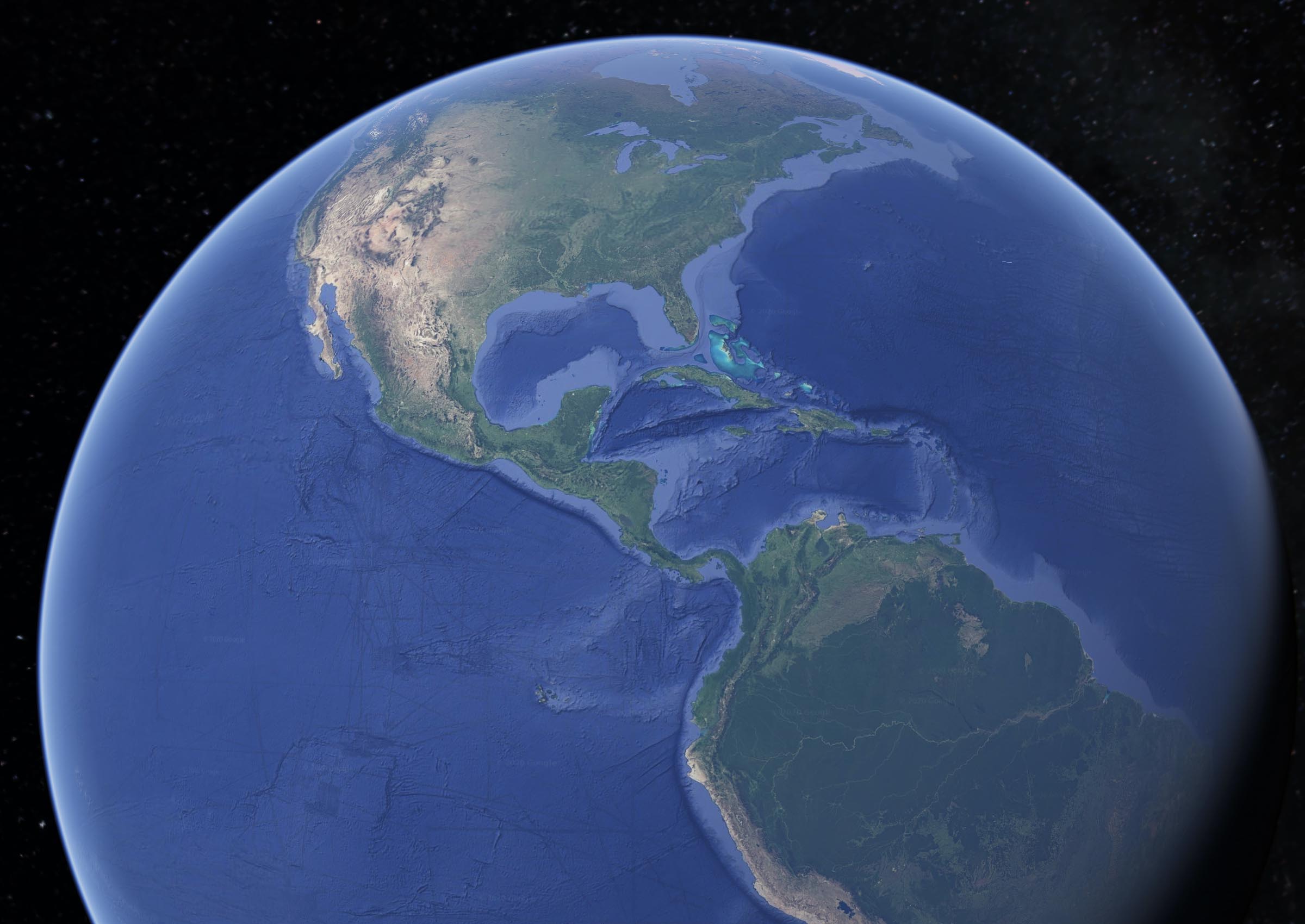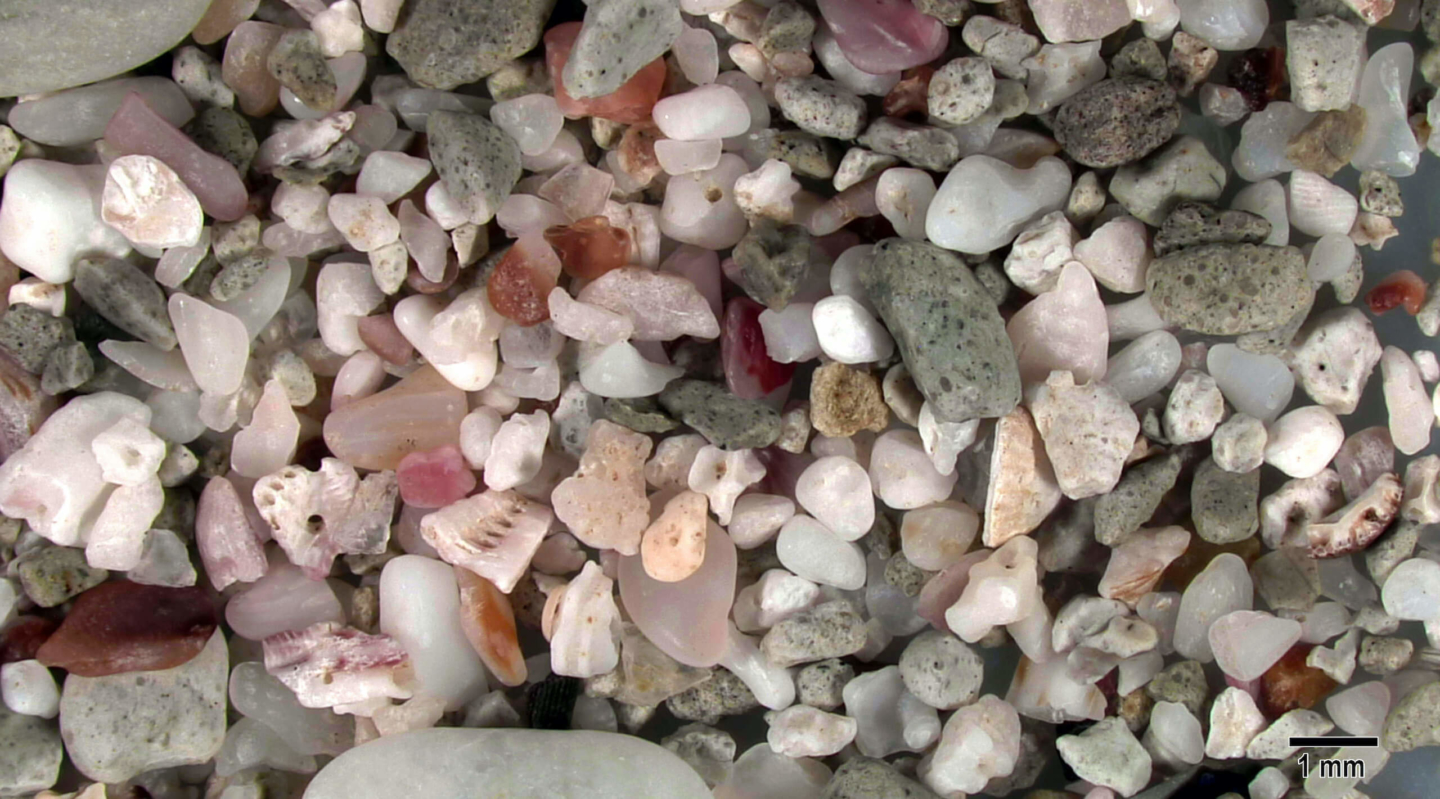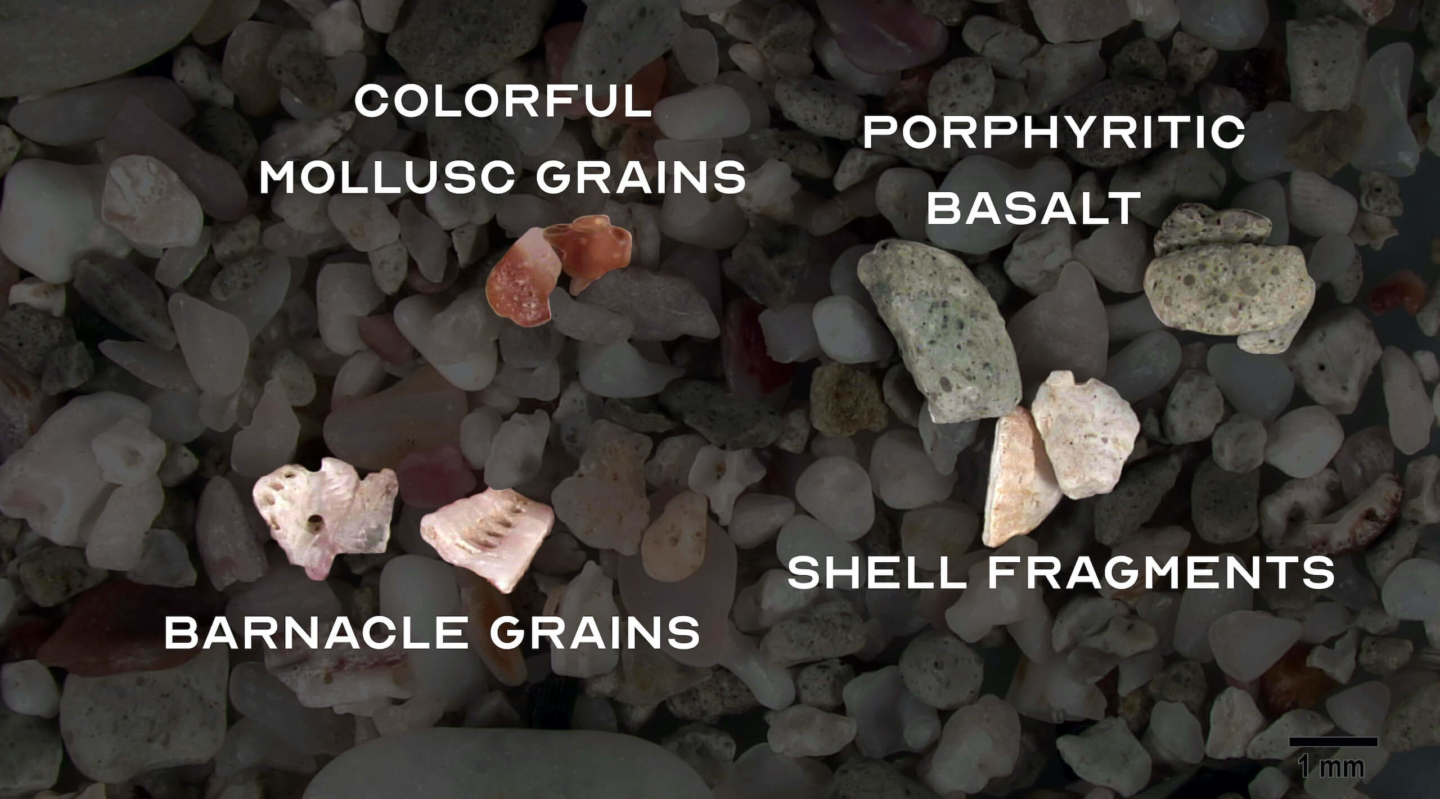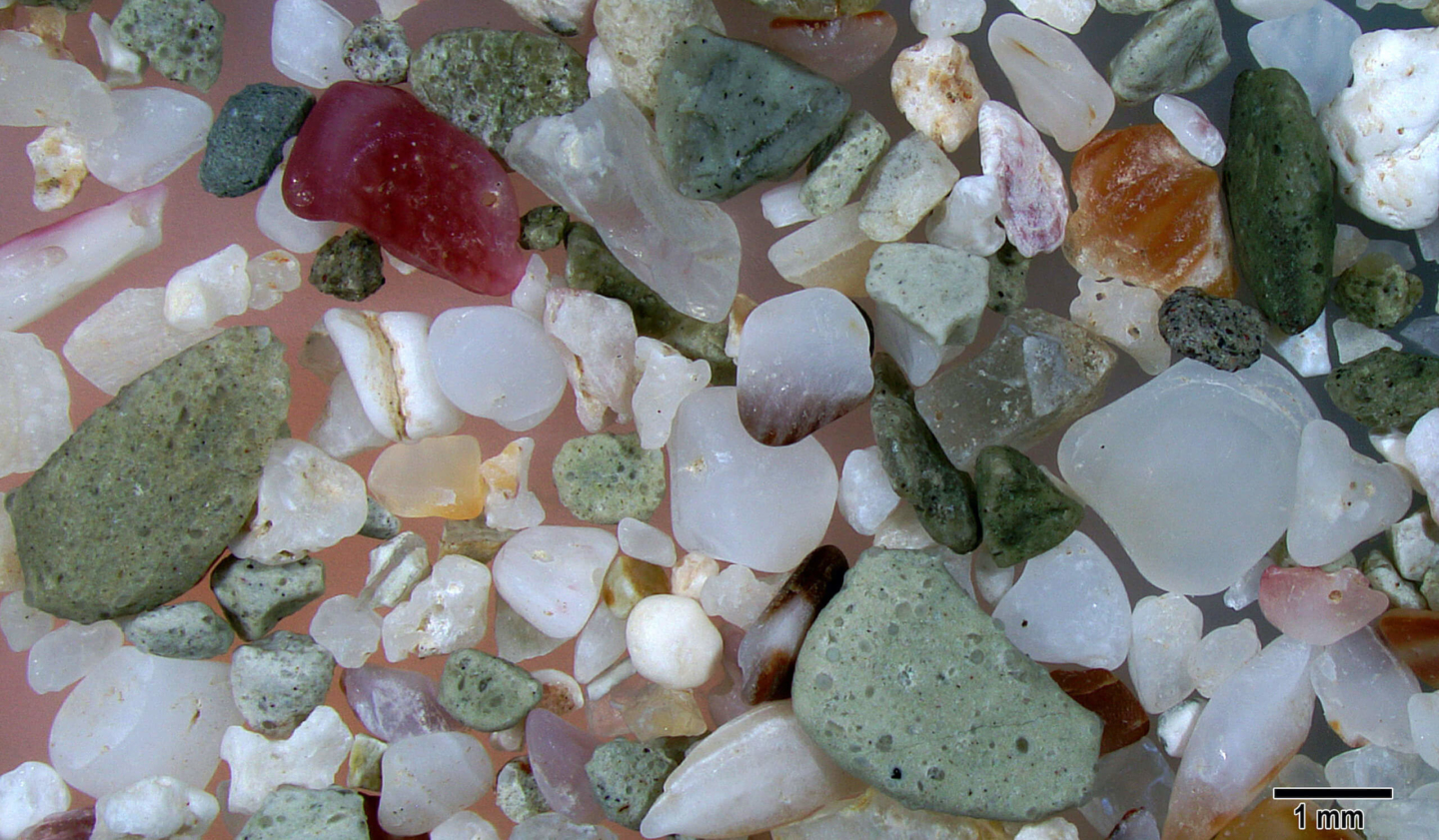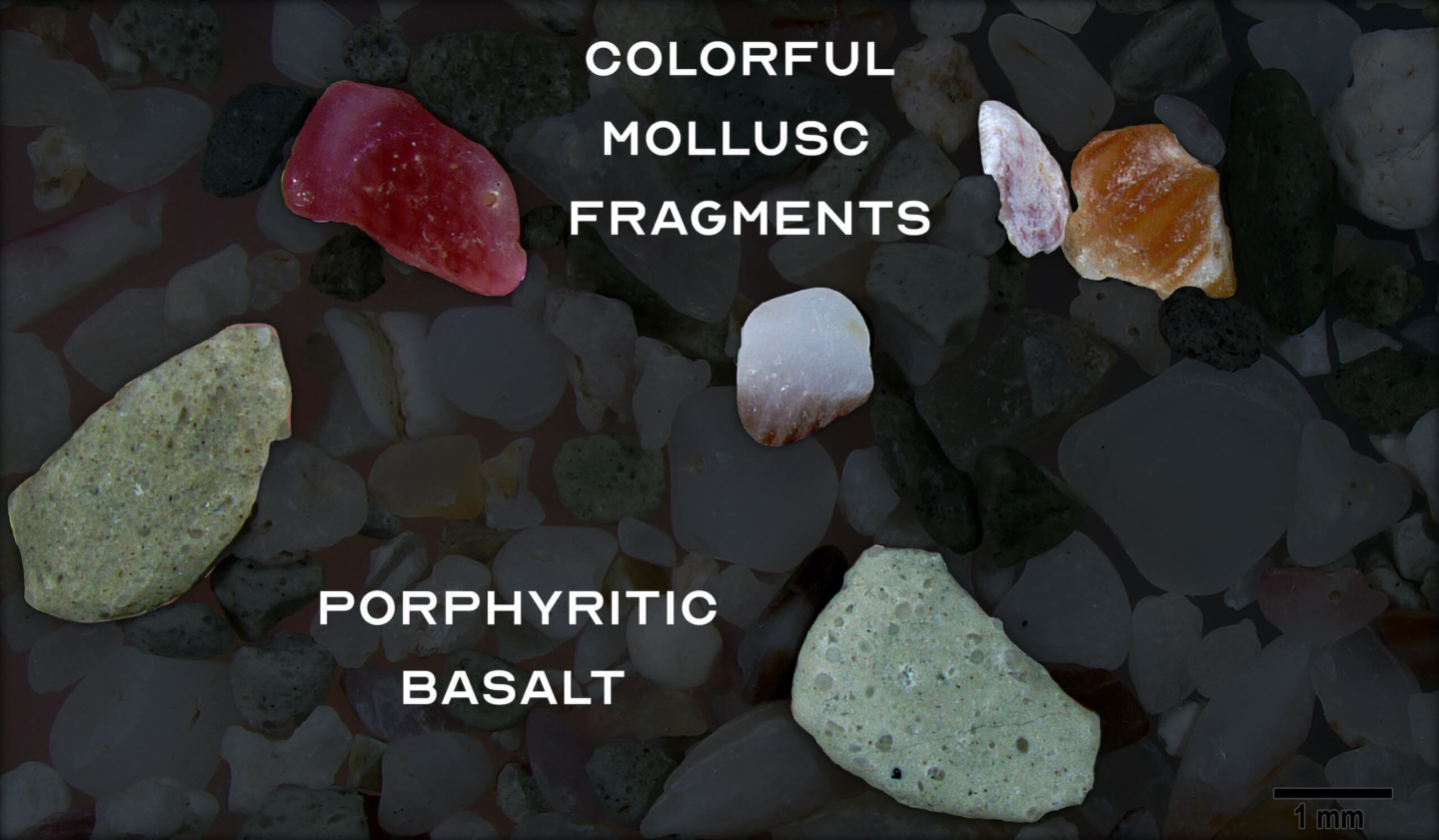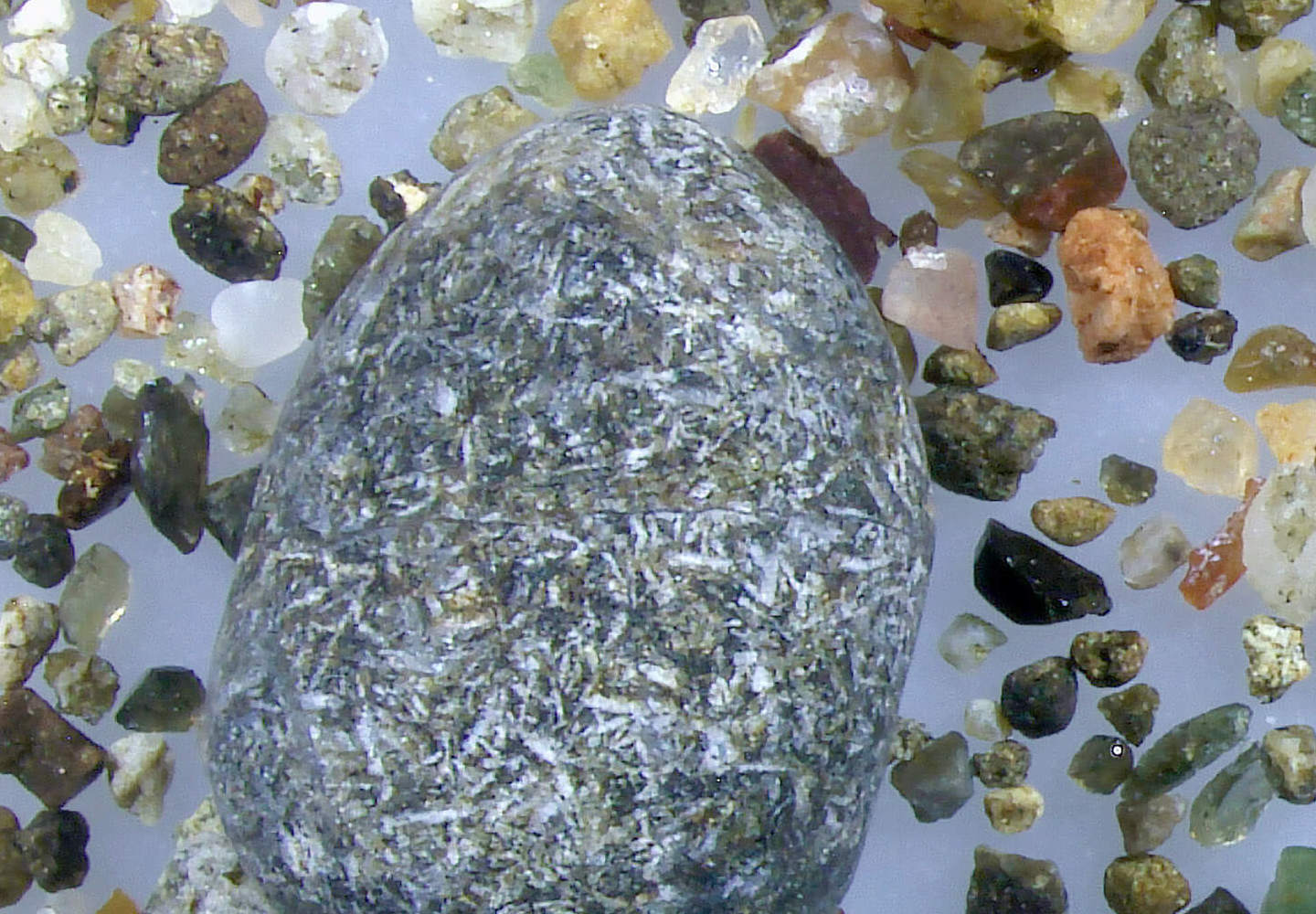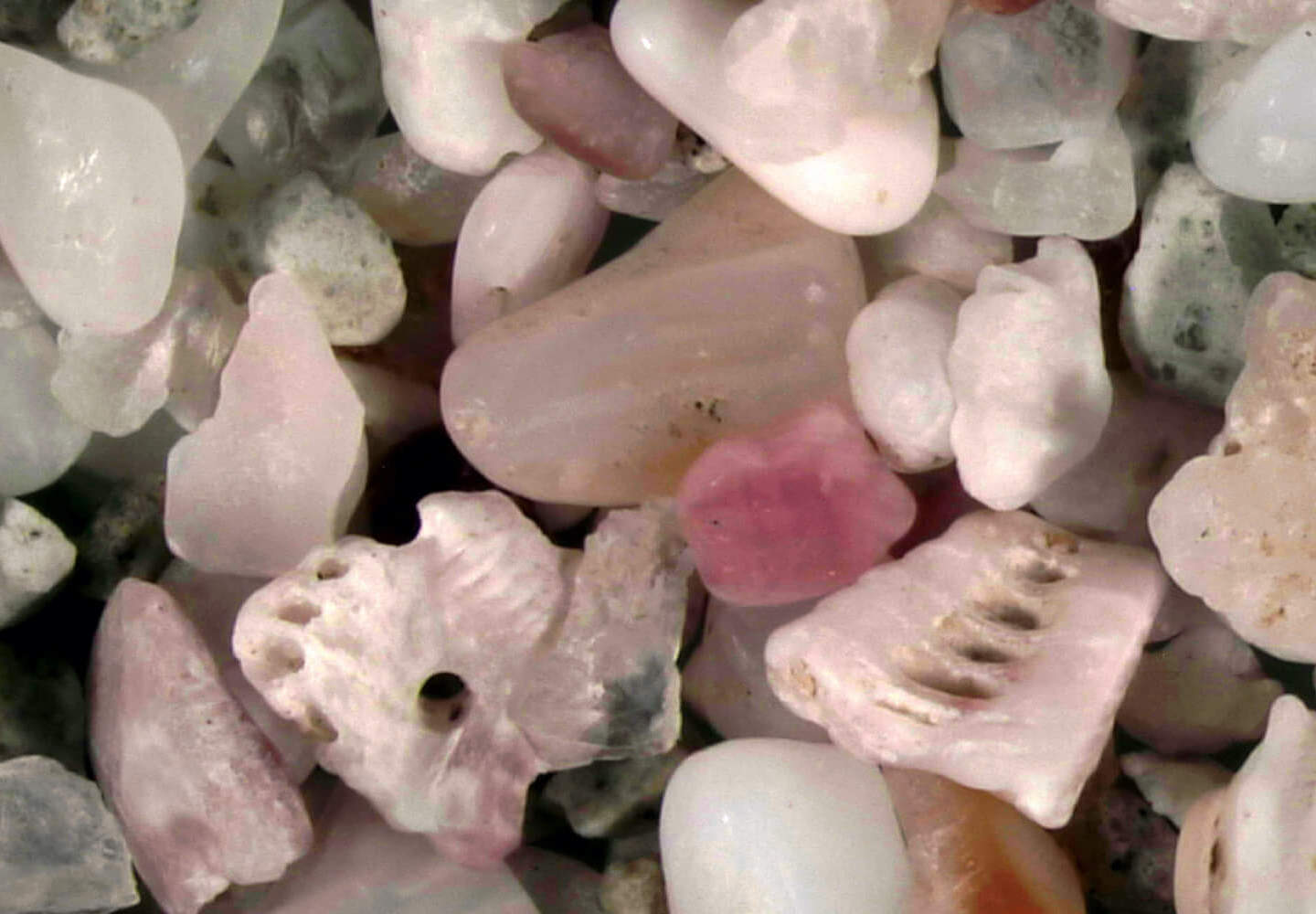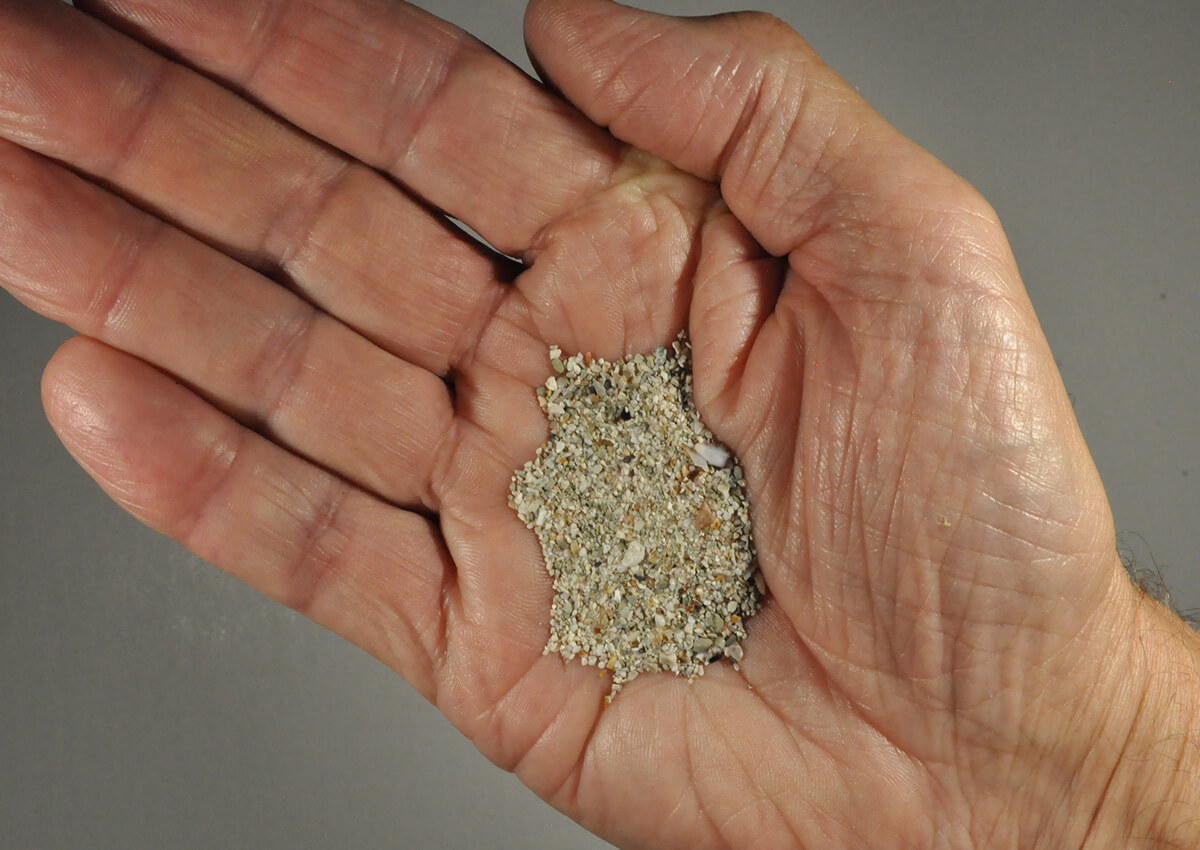
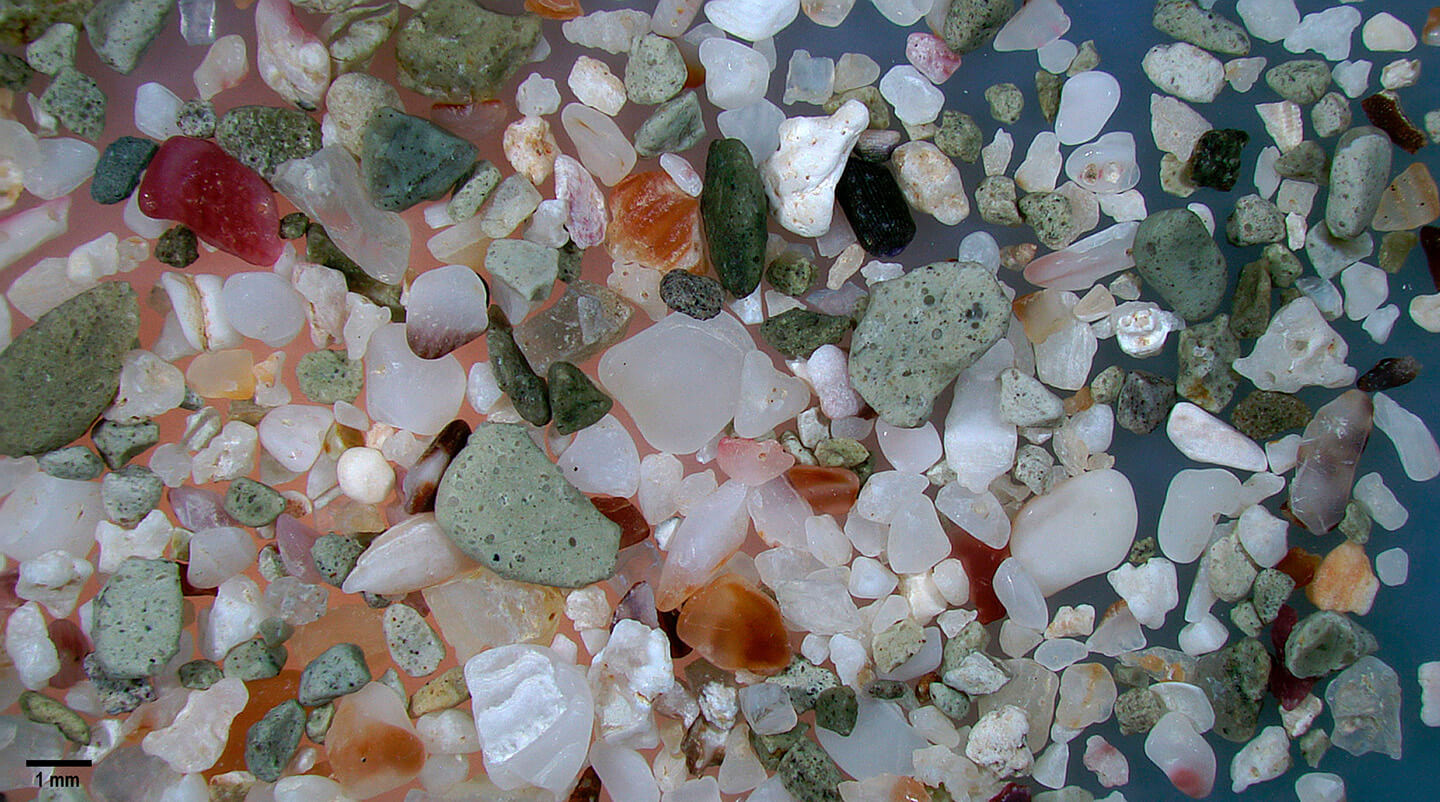
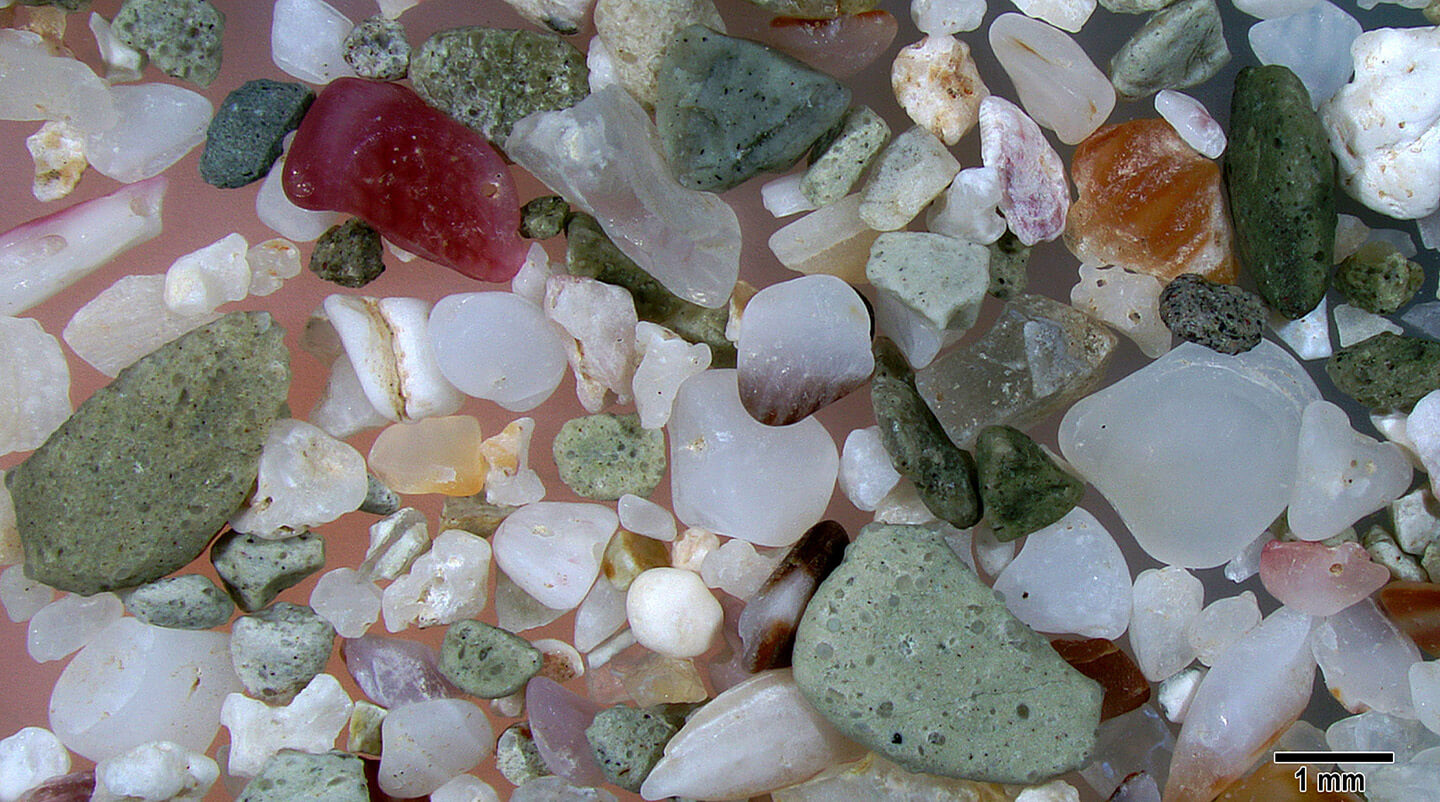
Geographic Overview
Isla Chora a short distance offshore from the mountainous Pacific coast of the Nicoya Peninsula. The peninsula beaches are natural nesting places for leatherback, Olive Ridley and Pacific green turtles. Located close to the Samara Beach, Isla Chora sand is primarily biogenic with the exception of some larger smooth greenish-gray sand grains stippled with mineral filled vesicles. The nearby Playa Camaronal sand is primarily volcanic with the beach sand originating from the adjacent mountainous terrain.
Sand Gallery
Isla Chora sand is primarily biogenic with a scattering of variably sized light greenish-gray porphyritic basalt stippled with vesicles that have been filled with microscopic quartz and other mineral crystals. Darker greenish-gray basalt contains black inclusions that may be hornblende. Most of the biogenic and mineral sand grains are smooth and rounded from wave action.

Two whitish-pink grooved fragments in lower center are probably barnacle shards. Red and brown grains are bivalve shell fragments. Greenish-gray stippled grains are porphyritic basalt with inclusions.
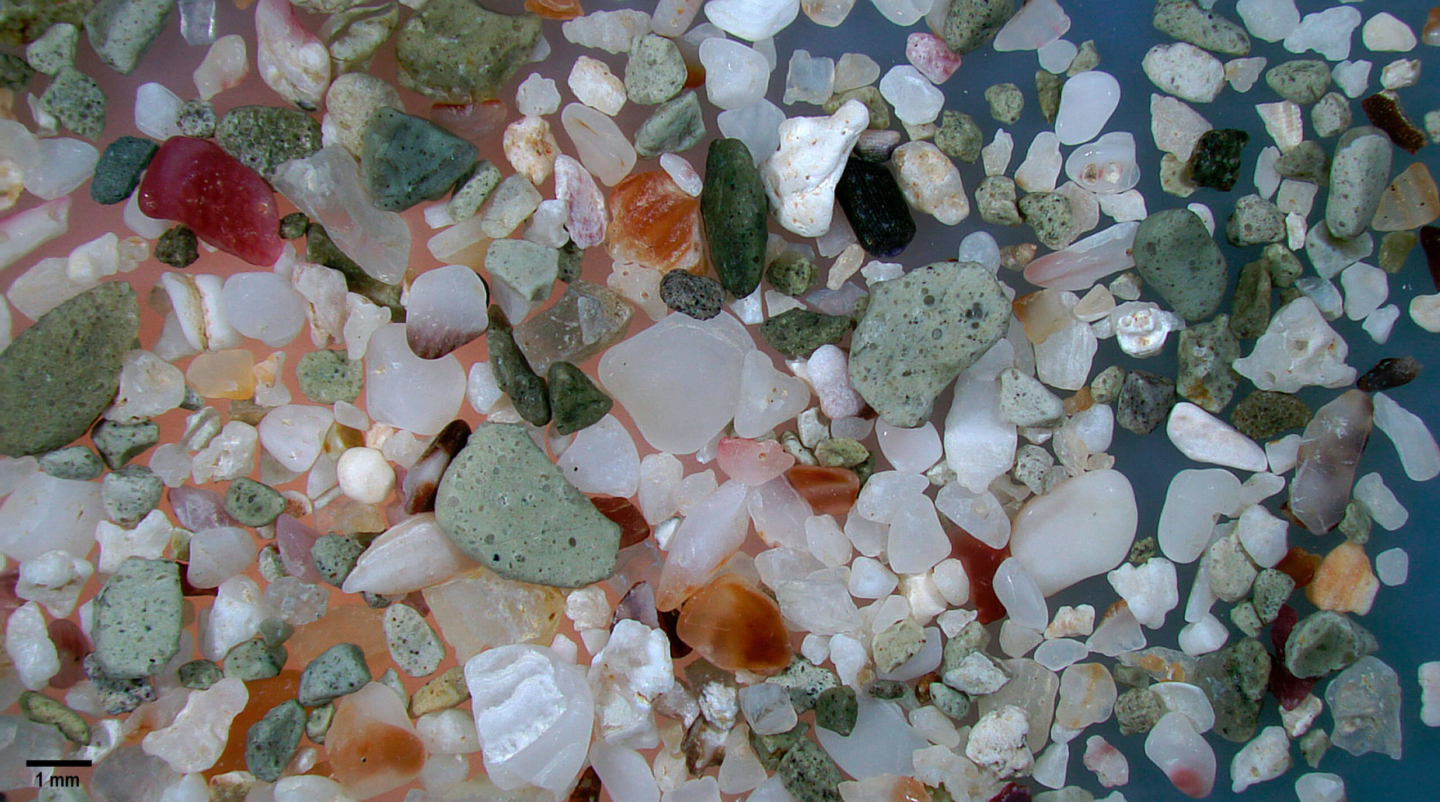
This mixture of colorful and white opaque large and small smooth sand grains are various biogenic shards. The two larger smooth greenish porphyritic basalt grains are stippled with small mineral crystalline inclusions embedded in basaltic ground substance.
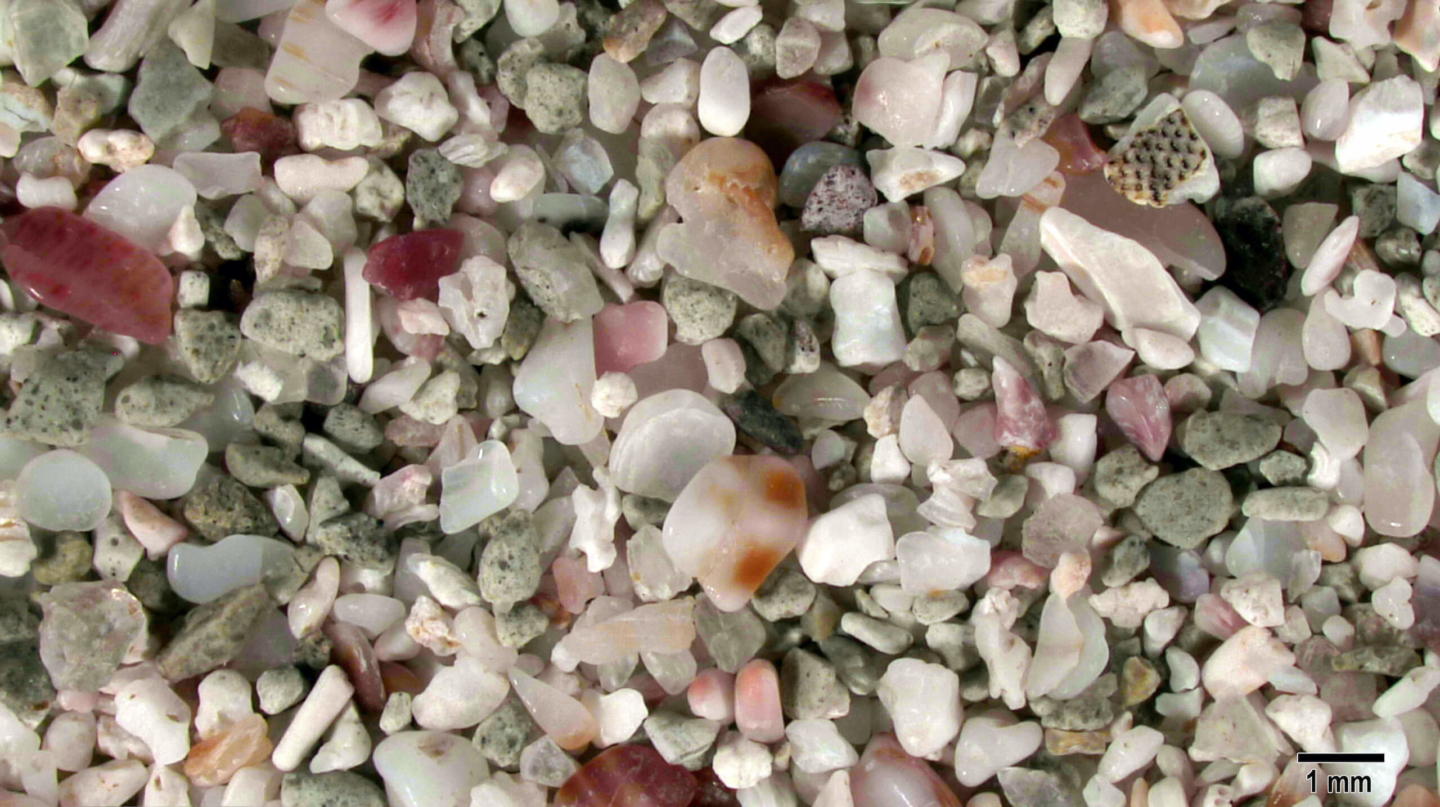
This low magnification of Isla Chora sand is comprised of a mixture of colorful shell and coral grains along with greenish-gray porphyritic basalt grains stippled with numerous small mineral inclusions.
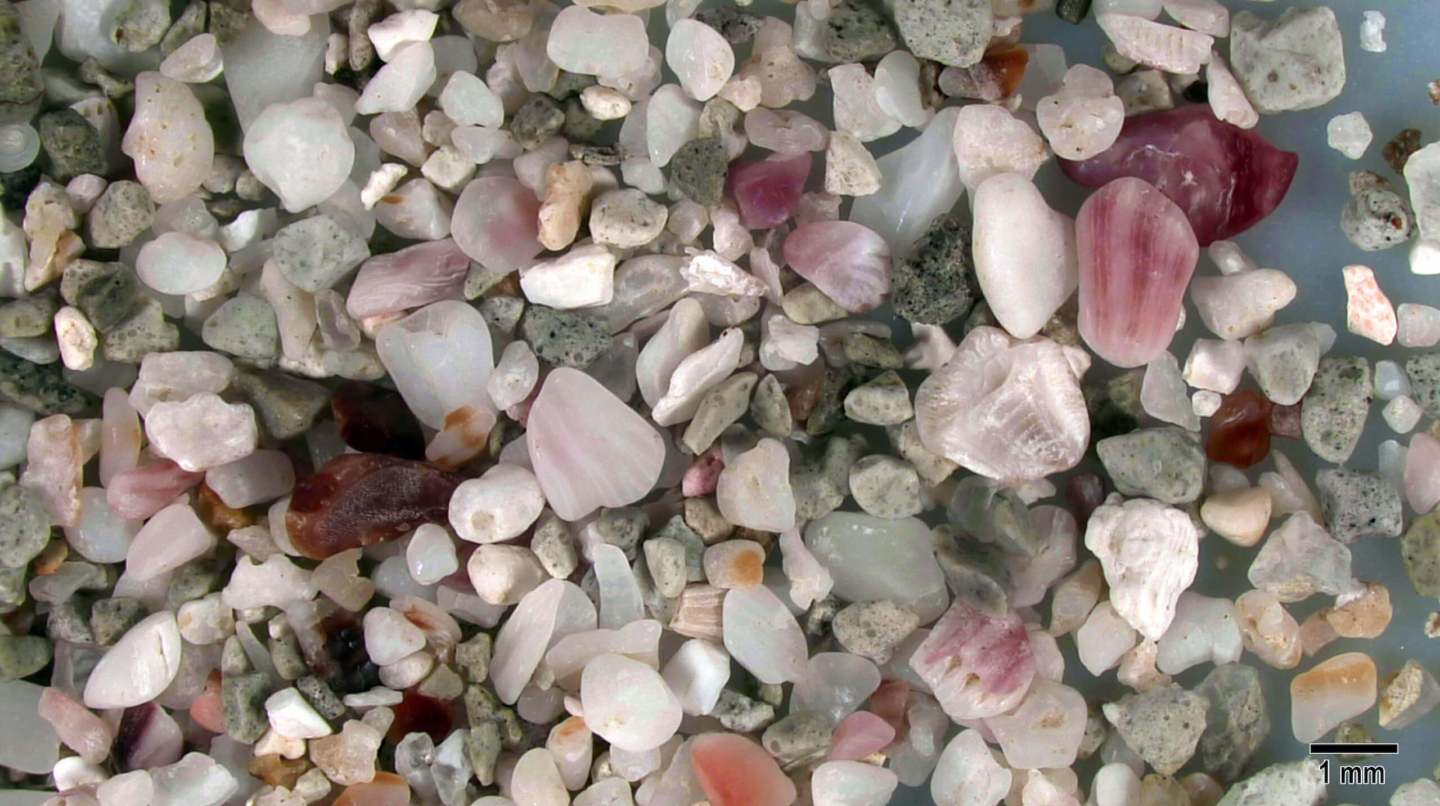
Red and red-brown sand grains along with opaque and white shell shards are prominent. The linear streaks of mollusc shell pieces are prominent in some sand grain fragments.
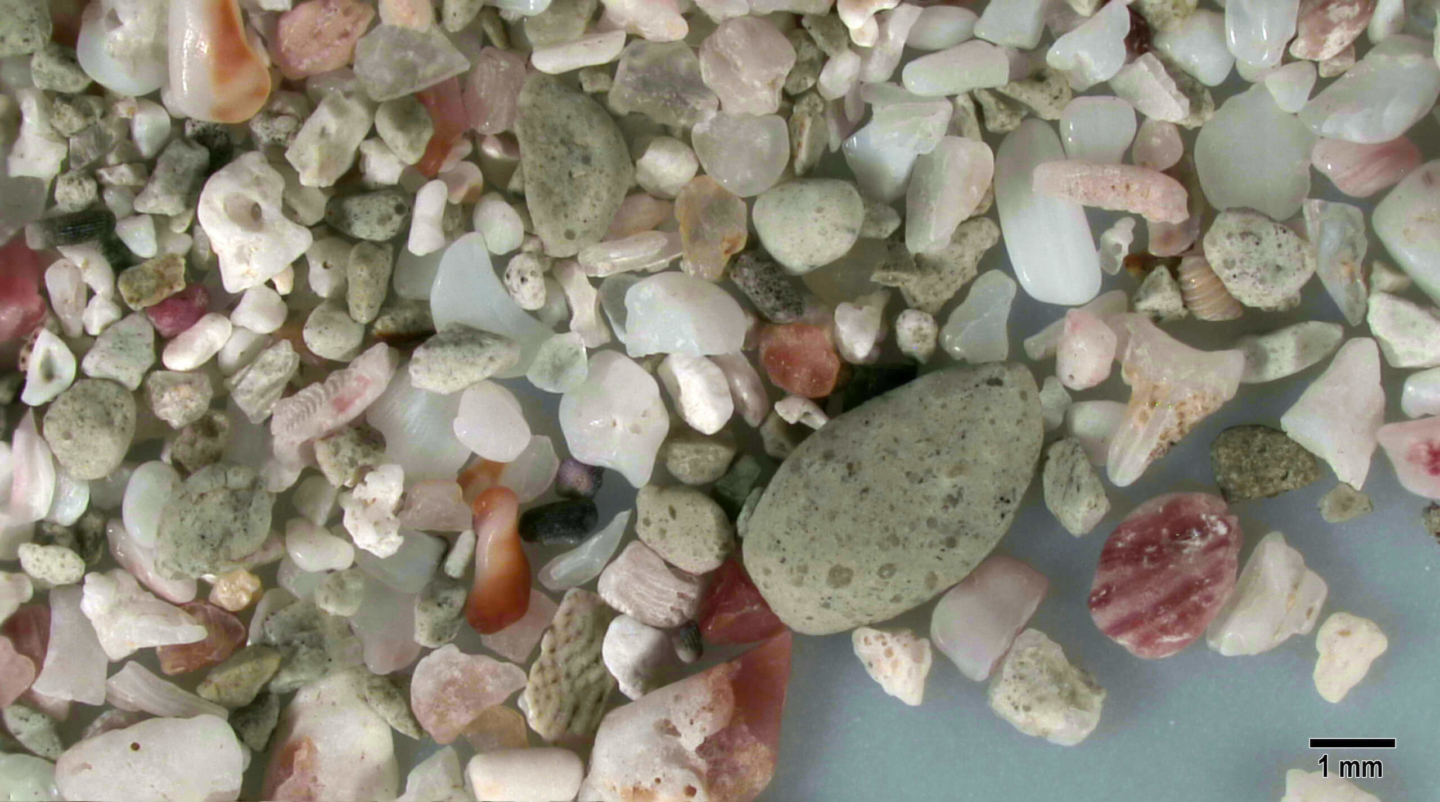
A large greenish-gray basalt sand grain just to the right of center contains multiple crystalline inclusions. A smooth red striped mollusc shard is present in the lower right.
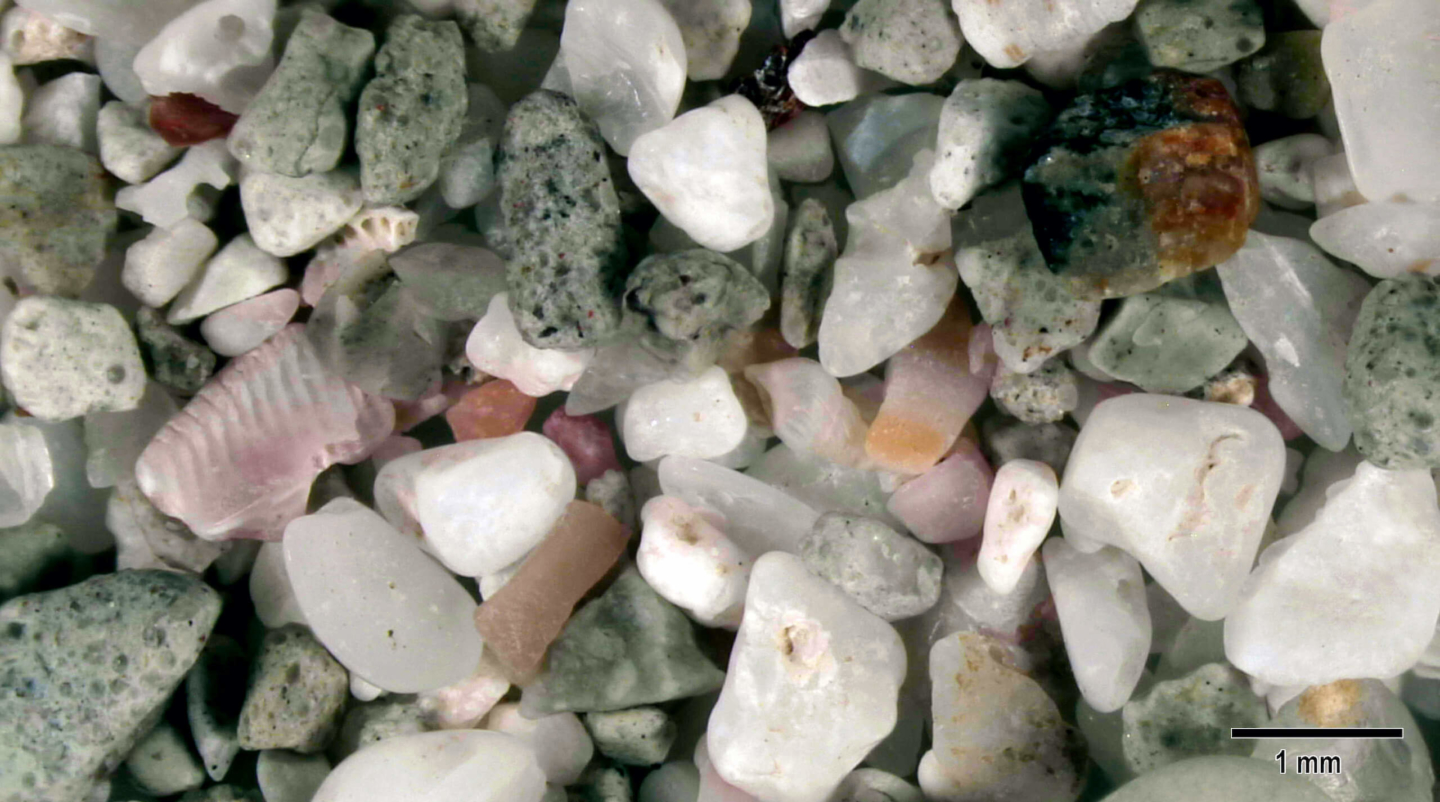
A rounded dark black and reddish brown sand grain in the upper right is probably a piece of metamorphic rock. Opaque whitish biogenic grains and porphyritic basal sand grains are also present in this sample.
